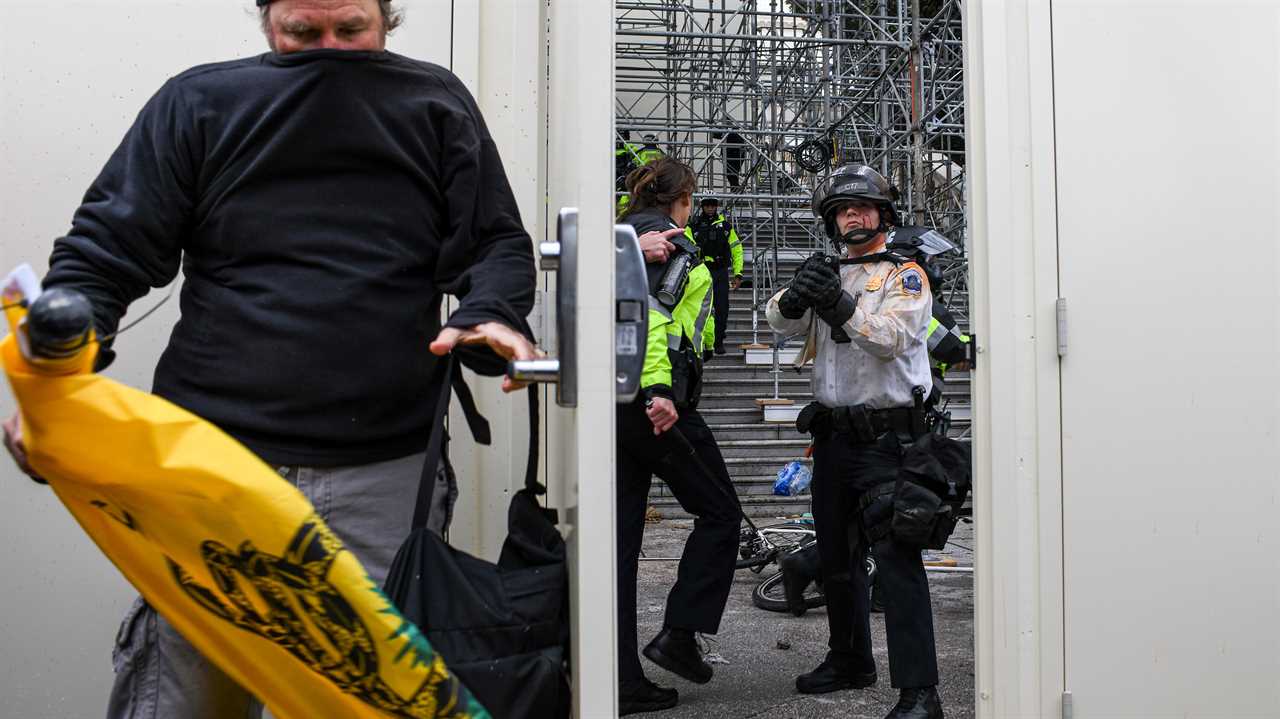
One officer lost the tip of his right index finger. Others were smashed in the head with baseball bats, flag poles and pipes. Another lost consciousness after rioters used a metal barrier to push her into stairs as they tried to reach the Capitol steps during the assault on Jan. 6.
“We don’t have to hurt you — why are you standing in our way?” one rioter told the officer as he helped her to her feet, according to court documents. She tried to regroup, but blacked out while making an arrest hours later. Doctors determined she had a concussion.
A little more than a month after the Capitol siege, a fuller picture of the injuries sustained by the police has emerged from court documents, footage revealed at former President Donald J. Trump’s impeachment trial, accounts provided by officers and interviews with law enforcement officials and experts.
The Capitol assault resulted in one of the worst days of injuries for law enforcement in the United States since the Sept. 11, 2001, terrorist attacks. At least 138 officers — 73 from the Capitol Police and 65 from the Metropolitan Police Department in Washington — were injured, the departments have said. They ranged from bruises and lacerations to more serious damage such as concussions, rib fractures, burns and even a mild heart attack.
One Capitol Police officer, Brian D. Sicknick, was killed, and investigators are increasingly focused on whether chemical irritants were a factor in his death, according to a senior law enforcement official. The Capitol Police said in a statement that Officer Sicknick died from injuries sustained “while physically engaging with protesters.” Two officers involved in the response have died by suicide, the local police have said.
The number of those injured does not account for the dozens, if not hundreds, of officers whom law enforcement officials estimate will suffer in years to come with post-traumatic stress disorder and the dozens who most likely contracted the coronavirus from unmasked Trump supporters who overran the Capitol, the experts and officials said.
At least 38 Capitol Police officers have tested positive for the coronavirus or were exposed to it, Representative David Cicilline, Democrat of Rhode Island and a House impeachment manager, said on Thursday. Nearly 200 National Guard personnel who were deployed to protect the Capitol in the weeks after the siege also tested positive, he said.
“If you’re a cop and get into a fight, it may last five minutes, but these guys were in battle for four to five hours,” said Chuck Wexler, the executive director of the Police Executive Research Forum, a nonprofit that advises departments across the country on management and tactics.
“You would be hard-pressed to find another day in history like this,” he said, “when the police encountered this level of violence in one event.”
The horror of the siege — which officers have described as “medieval” because of brute hand-to-hand combat and the use of blunt objects as weapons — received renewed attention this week at Mr. Trump’s impeachment trial. House managers repeatedly raised the injuries as they revealed new video and audio to argue that Mr. Trump incited his supporters to overrun the Capitol while lawmakers were certifying his election loss.






